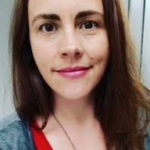
Driver-partners in the queue for ride requests at SeaTac are interviewed by members of Uber’s brand experience and design teams as part of an ethnographic field survey, November 2017. Photo by Adam Williams.
Uber is a technology company rooted in the physical and social geographies of mobility systems. Of course, millions of people around the world have discovered that Uber’s product is much more than a mobile app—it is also a world experience. For example:
- getting picked up at the airport moments after emerging from a terminal in a foreign country
- driving around a city, picking up people you’re meeting for the first time
- trying food from a new restaurant that you discovered through Uber Eats
Space, place, and landscape are central to the physical experience of sharing a ride from pickup location to destination. For example, consider how a shared ride across town also constitutes a social space. For many people, this is a space for conversations that broaden our connections and understanding of each other. For others, it can also be a personal space that allows us to reflect and reset. Understanding the connections and overlapping elements in these spaces is core to our success as a research team.
Real World, Real Evidence
From our perspective, in order for evidence to be relevant, resonant, and actionable, it must be fundamentally rooted in human geographies of lived experience in the physical world. Our UX research team provides qualitative fieldwork like ethnography in mixed methods research projects for a variety of business needs.
A relatively young company, Uber has rapidly expanded in terms of geographic locations, numbers of users, and completed trips. The scale and complexity of Uber’s products and impacts can be dizzying when you consider the stats (600+ cities in 65 countries across six continents, with 75 million riders, six million drivers, and more than ten billion rides completed since 2009!)
With the perspective that Uber’s business is globally connected (yet always uniquely local wherever we operate), evidence and fieldwork remain essential tools for how we create scalable, effective products and experiences that support a connected world. We prioritize research geographically as well as along lines of business. Our team looks for shared or universal qualities across markets that can help make research in one city relevant for many others.
In order to scale methods and approaches, we collaborate with local operations teams. Recognized for their essential role in Uber’s growth and expansion, Ops are historically one of Uber’s most valuable assets for elevating quality and consistency for our millions of diverse users.
Brand and Meaning
Uber’s UX research team now explores the impact of many nascent mobility systems for creating opportunities through movement—moving people, goods, and ideas around, through and into these spaces. We use a wide variety of methods to best explore the current and future states of these movements, in an attempt to understand how our business could or should influence transportation modalities, as well as how these could or should influence urban spaces and populations around the world.
As a brand, Uber is driven by the mobility of a global population. We’re proud to be part of how communities move, as well as a flexible earning opportunity for millions of drivers. There is so much more we can do to support people everywhere who rely on our platform. 2018 has seen Uber expand our commitment to safety for all users, along with the public and cities we serve. Developing technologies like scooters, bikes, freight, and self-driving cars are all opportunities for agency in reshaping urban environments to be more accessible for people, goods, and ideas on the go.
Evidence is Multidisciplinary
In order to understand and advocate for the people, places, and communities Uber serves, we’ve grown a highly mobile, diverse team. Researchers at Uber have advanced degrees in anthropology, geography, psychology, urban planning, computer science, and the humanities to name a few. Based across four continents, we identify, explore, and learn from local cultures and new regional developments. Our UX research leaders support the cross pollination of staff interests and abilities by hosting workshops and participatory research globally.
We’re also dedicated to creating opportunities for many other teams across the company to join us in the field, exploring and understanding needs that can be both universal and inspiringly diverse. Our efforts to gather evidence with a variety of stakeholders boosts awareness of the value of fieldwork across the larger groups of design, product, marketing, and executive leadership. Ideally, we’re able to build empathy for the real experiences of the worlds our product is now a part of.
Uber’s user segmentation is also diverse. From riders to drivers to eaters, and from delivery partners to freight partners, there is lots of complexity across products and experiences designed for so many unique user profiles. From this perspective, UX research at Uber can be a dream job for an intrepid citizen of the world. It’s also an incredible opportunity to engage with organizations and representatives of urban governance and engineering, with whom we share the mission to support development that improves mobility and quality of life for everyone.
It’s Great to Be here
Uber’s UX Research team is proud to be part of this year’s EPIC conference. Many of us will be in attendance and looking forward to all of the presentations, including one by Jenny Lo, a researcher on our team.
We hope EPIC is an opportunity to strengthen connections across industries and academia. If you’re someone for whom evidence has been central to how you understand Uber’s business, customers and community, we hope you’ll say hello and share what you’ve learned. Some of the trends that we’re currently exploring include the accelerating fall in global car ownership, growing numbers of Uber driver-partners who happen to be retired from previous careers, the growth in food delivery and restaurant online entrepreneurship, and shifts in how people approach flexibility and control in how they wish to work and earn money.
*Editor’s Note: Uber is an EPIC2018 Sponsor. EPIC is a volunteer-run, nonprofit organization and the support of sponsoring organizations makes our incredible international conference possible. Conference papers, case studies, PechaKucha, ethnographic film, and gallery installations are selected through a blind peer review process managed by our conference committee, which is independent from our board and sponsors.
Related
To Have and Have Not: Exploring the Grammars of Sharing in the Context of Urban Mobility, Anna Zavyalova
Autonomous Individuals in Autonomous Vehicles: The Multiple Autonomies of Self-Driving Cars, Erik Stayton, Melissa Cefkin & Jingyi Zhang
Ethnography First! Promoting Sustainable Lifestyles through Locally Meaningful Solutions, Dan Podjed
Putting Mobility on the Map: Research Journeys and the Research Journey, Simon Roberts



0 Comments